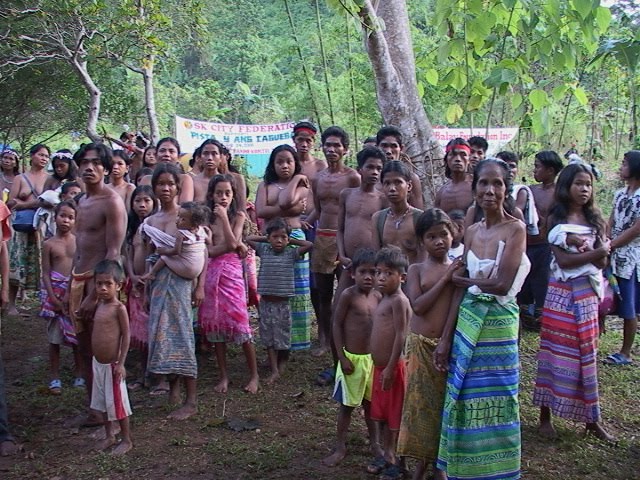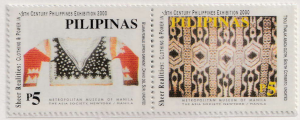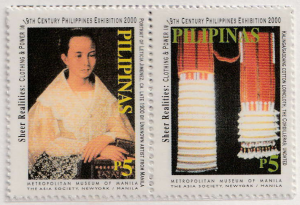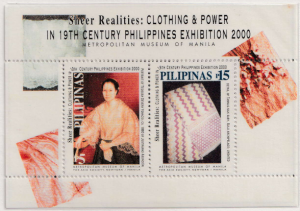Trivia about the Clothing & Power in 19th Century Philippines
T’BOLI T’NALAK ABACA CLOTH; South Cotabato. Distinctively T’boli, this tubular garment is woven using abaca fiber that has been burnished and tiedyed. Geometric patterns result from woven maroon and flesh-colored fibers.
B’LAAN FEMALE UPPER GARMENT; 38.5 x 120.5 cm; Davao del Sur. Long-sleeved female blouse or upper garment of the B’laan women of Davao del Sur, usually in red, white and blue color coordinates.

Fully-beaded with handmade mother-of-pearl sequins that are sewn on the neck, shoulders, hipline and cuffs of the sleeves in attractive geometric patterns. (Ramon N. Villegas collection)
PORTRAIT OF LETICIA JIMENEZ by unknown artist from Sta Ana, Manila; Oil on canvas; 67.1 x 50.9 cm; Late 19th century. Dramatizing the epitome of feminine propriety and poise, this portrait painting of a daughter named Leticia conveys a full inventory of formal ladies’ wear of the period: pifia baro (blouse); laced camisa (chemise); scalloped peiiuelo (neckerchief); plain or striped saya (skirt); and jewelry in gold and silver. (Bangko Sentral ng Pilipinas collection)
KALINGAIGADDANG COTTON LOINCLOTH; 12 X 206 cm; the Cordilleras. Handwoven, male cotton G-string in pre-dominantly red coloration with black and yellow thread designs. Both ends are heavily beaded using red, white, yellow and black glass beads to form geometric patterns. (Ramon N. Villegas collection)
PORTRAIT OF TEODORA DEVERA YGNACIO by Justiniano Asuncion; Oil on canvas; 87 x 68 cm; Circa 1880. Typical of a mixed-race elite, the sitter is dressed in baro’t saya (blouse and skirt) of pifia, cotton and silk fabric. Other accouterments include rings, chest pin, earrings, comb, fan and handkerchief. The painting has emphasized a melding of qualities of fragility and personal strength of the sitter. (Private collection)
DETAIL OF TAWSUG SILK SASH; Sulu Archipelago. Called kambut in Tawsug language, this fine example of hablon or textile weaving employed distinct geometric patterns in yellow, green, orange, fuschia and lavender colors that are truly Tawsug.
Stamps featuring the Clothing and Power in 19th Century Philippines



Recent Comments